I had spent a long time looking for a boat that I could build to sail the waters of Chesapeake Bay and beyond. The boat would need to be able to carry four for daysailing, accommodate two for camp-cruising for up to two weeks, offer good sailing performance, have a shallow draft for exploring backwaters, and carry a small outboard for auxiliary power. It had to be small enough to be built and stored in a two-car garage, easily trailered, simple enough to be built in a reasonable amount of time, quick and easy to rig at the launch ramp, and have the good looks of a classic wooden boat. Although my list of requirements seemed to grow as I browsed through books of boat plans, my focus narrowed down to catboats. Their generous beam, sometimes almost half their length, offers lots of room, and their single sail is as simple as rigs get. In the book Forty Wooden Boats, I finally found the boat I wanted to build, the Marsh Cat by Joel White.
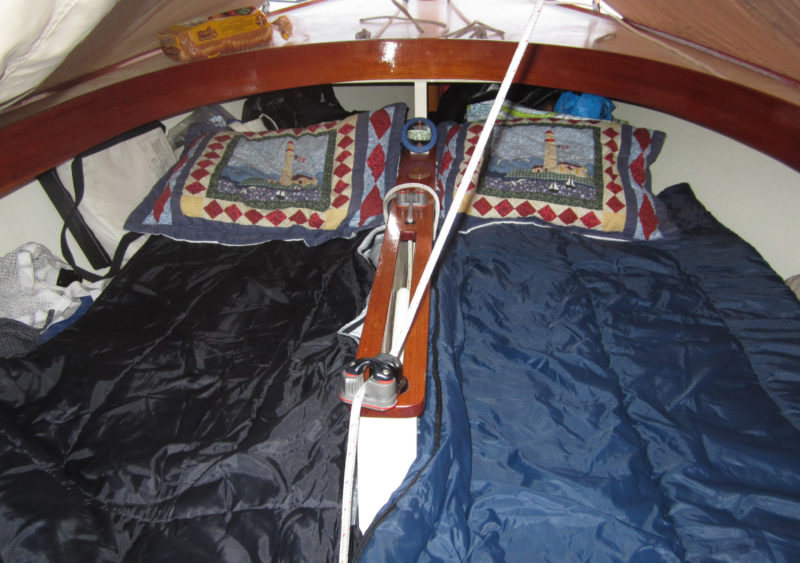 Kevin MacDonald
Kevin MacDonaldThe Marsh Cat’s broad beam makes the cockpit sole wide enough to sleep two flanking the centerboard trunk. A boom tent provides cover.
At 15′ long and with a beam of 6′11″, the Marsh Cat has a spacious cockpit. With that much breadth, there would be ample room for sleeping comfortably on the floorboards on either side of the centerboard case. The 152-sq-ft sail set on a high-peaked gaff rig supplies the power. The 1,309-lb displacement assures easy trailering and launching, and the 9″ draft, with the centerboard up, makes exploration of the Chesapeake Bay’s shallow estuaries possible. The Marsh Cat plans from The WoodenBoat Store offered all the detail needed for a first-time builder. The full-sized patterns for molds, stem, and transom eliminate the need for lofting.
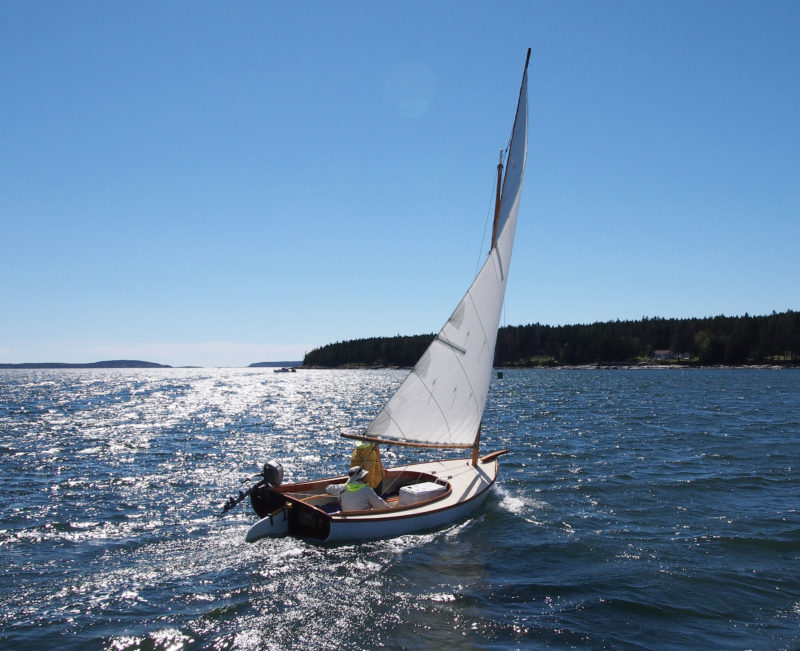 Phil Maynard
Phil MaynardSailed level, the Marsh Cat has very little weather helm and can clip along at 5 to 6 knots.
The round-bilged hull can be cold-molded, or carvel-, lapstrake-, or strip-planked. I chose to strip-plank the hull with 5/8″ x 1″ western red-cedar strips. The hull is constructed upside down on a strongback supporting molds cut from 5/8″ OSB (oriented-strand board). The keel gets laminated in place over the molds, and the 1 ¼″ mahogany transom and laminated stem are secured to it. Starting at the sheer, I sprang the cedar strips around the molds and attached their ends to the stem and transom with bronze wood screws. I started with bead-and-cove strips, which nest together edgewise on the curving sections of a hull. but eventually I switched to making them with a rectangular cross-section, which saved time and wasted less material in the milling process; the rectangular-sectioned strips also seemed easier to bend. There are no tight curves in the hull, so the gaps between strips were minimal and easily filled themselves with the epoxy that squeezed out as I glued them in place.
With all of the strips in place, I removed the drips and runs of cured epoxy from the hull with a heat gun and scraper. I cut the centerboard slot, faired the hull, and ’glassed the exterior with 10-oz fiberglass cloth for a low-maintenance, watertight structure. The outer keel was then attached with epoxy and bronze screws. Priming and painting the hull revealed the sweet lines Joel had drawn. After turning the hull over I gave the interior the same cleaning, fairing, and ’glassing. I spiled, laminated, and installed the sheer clamps, then built the centerboard trunk with ¾″ okoume plywood sides and Douglas-fir head ledges. The molds used to form the hull served as patterns for the floors that I set in the hull with epoxy and fiberglass. The laminated Douglas-fir deckbeams, set in notches cut in the sheer clamps, were canted slightly from vertical and set square to the deck so the top faces wouldn’t have to be beveled. The ½″ okoume plywood deck easily took to the slight compound curve created by the deckbeams, a great relief. I laminated the coaming with three 1/8″ x 8″ mahogany pieces sprung into place; after the epoxy cured I removed the lamination and cut it to shape before installing it permanently. For the floorboards I chose ipe, a dense hardwood that is very durable but equally hard to work; I took great pains to install them with the holes for the screws drilled, countersunk, and plugged.
After I’d finished the boat, I turned my attention to the spars and rigging. I used Sitka spruce for the spars, but there’s no reason Douglas-fir couldn’t be used; there are valid arguments for both and, in my opinion, either is fine. When money is more important than shaving ounces, Douglas-fir is the less expensive option, with the added benefit of being more durable. I ordered my sail from Stuart Hopkins of Dabbler Sails, a company specializing in classic small-boat sails. The running rigging is all Sta-Set, a braided polyester line with low stretch, and the standing rigging is 3/16″ stainless-steel 1 x 19 wire with Sta-Lok terminals. If I had it to do over again I would use 5/32″ wire and terminals to save a little weight.
After 800 hours of work, my Marsh Cat was ready for launching. My wife Teresa and I trailered the boat to St. Michaels, Maryland, for its shakedown voyage. After arriving at the ramp we spent a long time rigging the boat, only because we were constantly interrupted by lookers-on with lots of questions and compliments. I backed the trailer down the ramp and LITTLE T slid effortlessly off the trailer into the water. After my usual scramble to secure the forgotten drain plugs, two of them, it was a relief seeing that she floated on her lines.
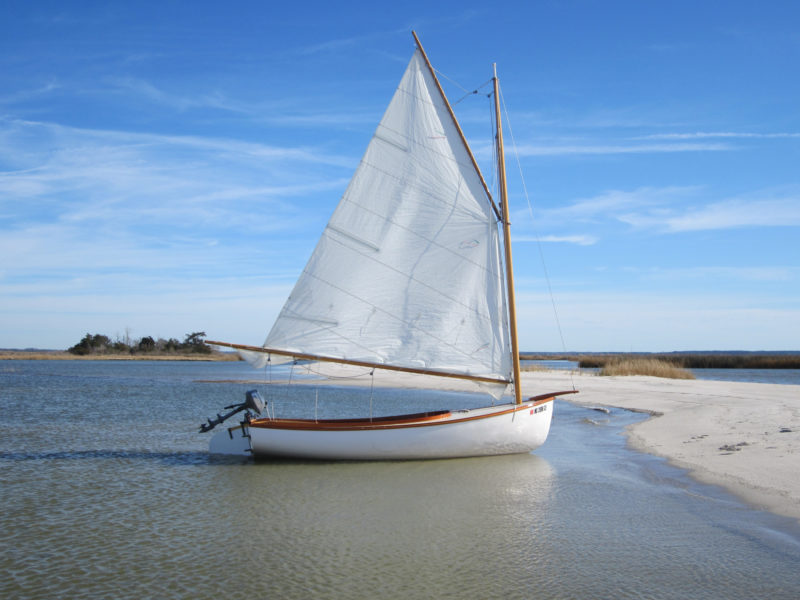 Kevin MacDonald
Kevin MacDonaldWith a reef in her 152-sq-ft sail for a fresh breeze, LITTLE T’s 9″ draft allowed her to take a break in some thin but well protected water.
It was a hot, humid summer day without a whisper of wind, and we motored the newly christened LITTLE T around the St. Michaels harbor and past the Chesapeake Bay Maritime Museum. Several people shouted their approval from the shoreline, adding to our already swelling sense of accomplishment. As the day progressed, the clouds began to build and a breeze finally showed up. We raised the sail and were sailing at last, but the skies soon turned black and the wind increased markedly. We should have taken cover in a cove and waited out the storm, but we opted to travel out into the open Miles River with 6 miles to go to get back to the ramp. LITTLE T was really going to get a test. The wind howled and a torrent of rain came down. We bailed constantly to keep up with the rainwater pouring off the sail and into the boat. We made it back to the ramp in about an hour, glad that the maiden voyage and sea trial was over. The conditions for our first outing were quite challenging, but the Marsh Cat came through with flying colors.
It has now been six years since that initial launching, I have sailed my Marsh Cat about 4,000 miles, and in that time have gained a great deal of respect for the boat’s abilities. Catboats are known for their weather helm in stiff winds, and the Marsh Cat is not immune to this, but with a little experience and a proper reefing schedule it can be minimized. The Cat likes to sail level and the weather helm is all but eliminated when it is. With a single reef and a slackening of the mainsheet in gusts, it remains docile and in control in winds of about 14 knots. As the wind builds to about 18 knots, it’s time for the second reef. Above 25 knots, it’s time to head for the barn unless you have crew. I’ve sailed my Marsh Cat in the Florida Keys with a competent crew member aboard in 30+ knots of wind with a double reef and both of us—over 500 lbs—hiked out over the rail. In gusts we buried the leeward rail but were still in control and felt no need to return to shore. Beating into the wind, it is common to make 5.25 knots; 6.5 knots running before the wind. I have seen peaks of 9 knots surfing down waves. When the wind is down, a 2-hp outboard pushes the Marsh Cat easily to a slow cruise of 4 knots or well over 5 knots if need be.
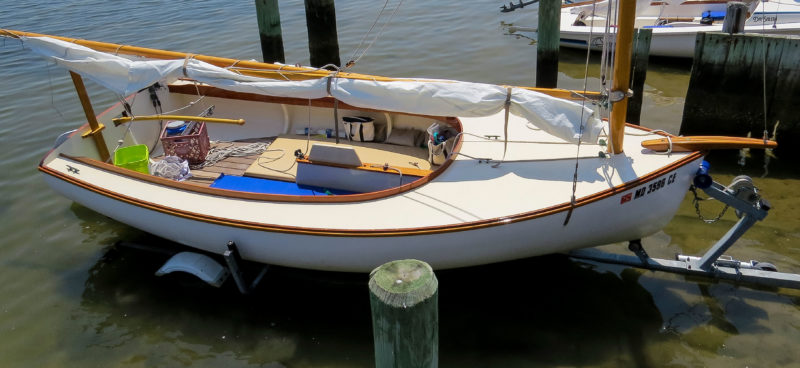 Barry Long
Barry LongThe Marsh Cat was designed without arrangements for seating other than an expansive sole to stretch out on and a wide coaming to lean against. Some builders have added low benches.
It is often said that all boats are a compromise, but the Marsh Cat has met all my requirements and then some without any significant shortcomings. Simplicity is certainly one of its most appealing traits. The single sheet and sail make solo sailing a breeze. There is no interior furniture to get in the way: The sole is my seat and the coaming is my backrest. It can handle heavy loads and stay out when the rest of the fleet is heading for shelter. Its spacious accommodations are a delight when camp-cruising. A setup time at the ramp of less than half an hour isn’t an impediment to frequent use or going sailing on a whim. I sail backwaters of Chesapeake Bay often, and I’ve trailered LITTLE T from my home in Maryland to Maine to sail to Matinicus Island, over 11 miles from the mainland shore. I’ve sailed her along the Florida Keys and made the 45-mile passage to the Dry Tortugas. A crossing from Florida to the Bahamas is in the planning stages. From gunkholing to open-water sailing, the Marsh Cat can do it all.![]()
Since early childhood, Kevin MacDonald has been involved in boating activities ranging from water skiing to offshore fishing. Small-boat sailing and camp-cruising became his water sport of choice 8 years ago. The lack of suitable production boats for camp-cruising necessitated his building of LITTLE T.
Particulars
[table]
LOA/15′ 0⅜”
Beam/6’11”
Draft/ 8½” & 2’5″
Sail area/135 sq ft
[/table]
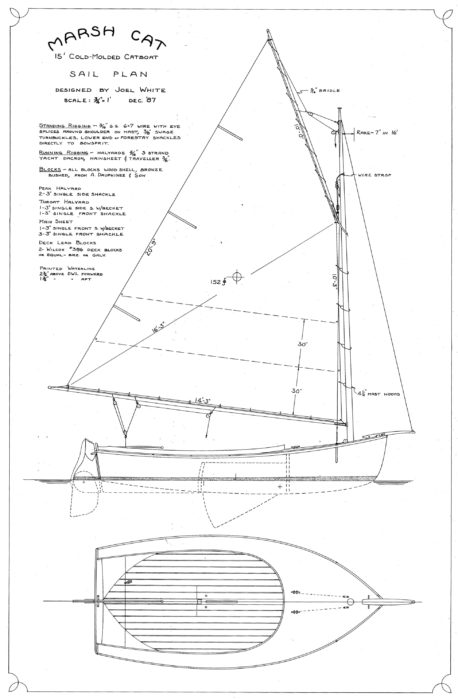
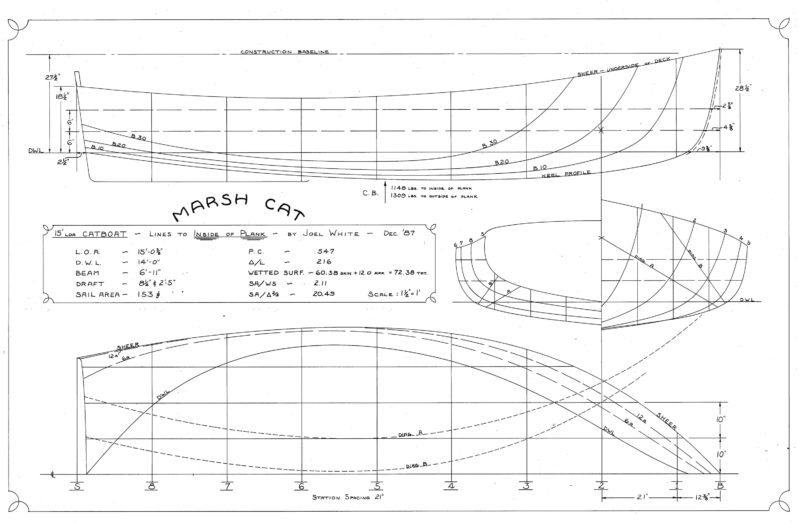
Marsh Cat plans are available from The WoodenBoat Store.
Is there a boat you’d like to know more about? Have you built one that you think other Small Boats Monthly readers would enjoy? Please email us!
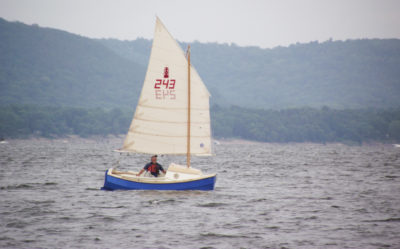
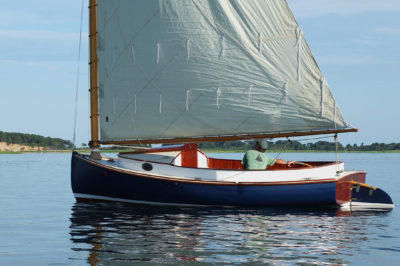
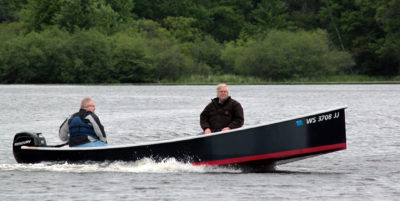
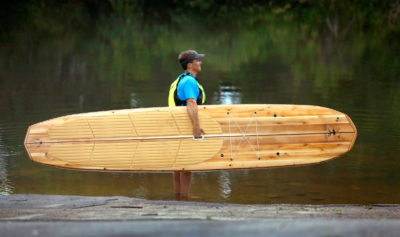
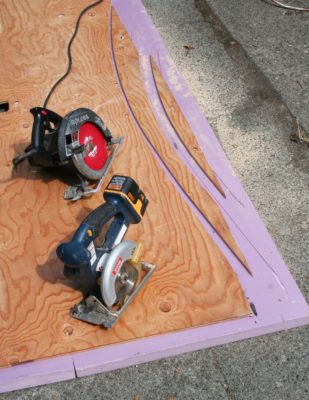
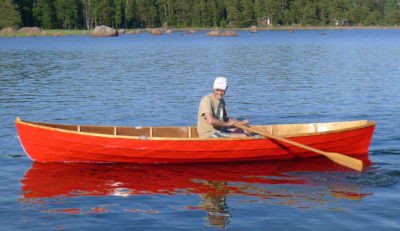


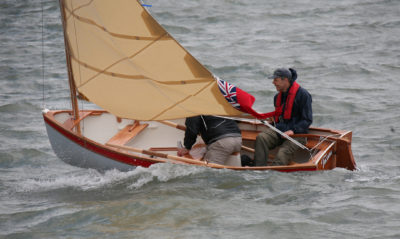
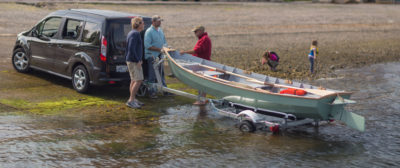
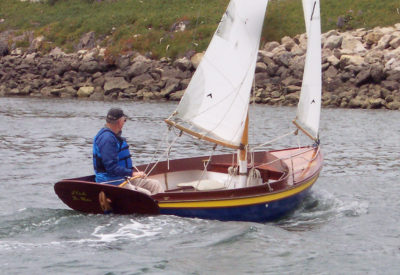
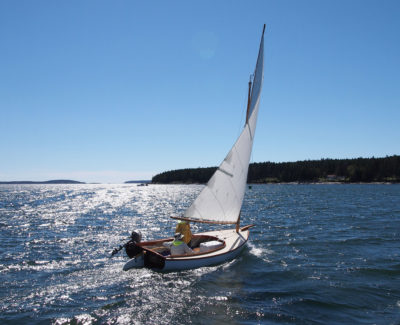
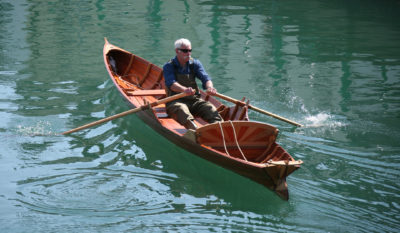
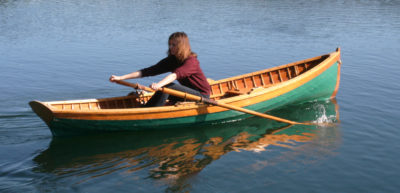
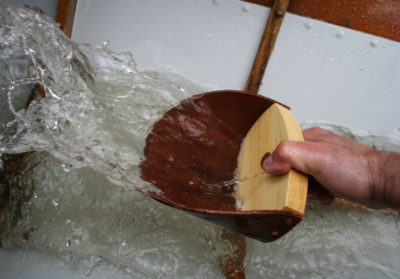
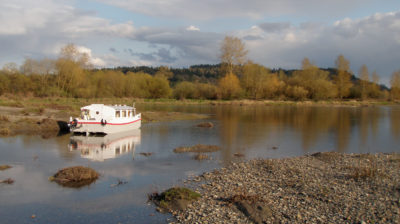
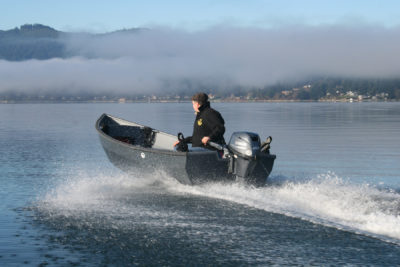

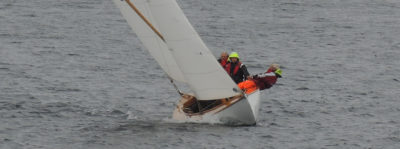
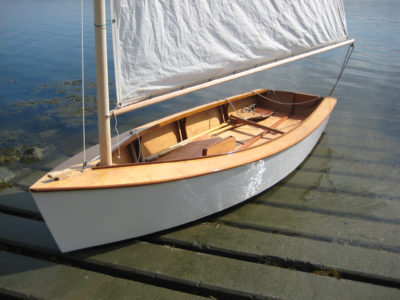
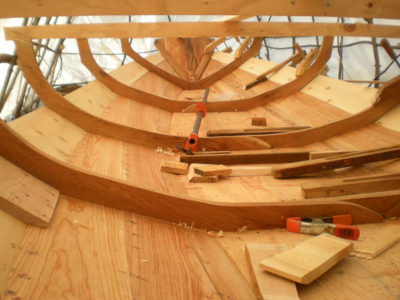
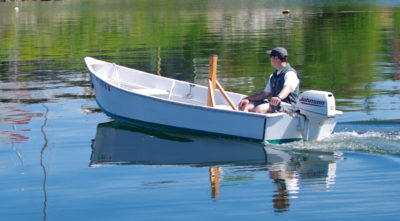
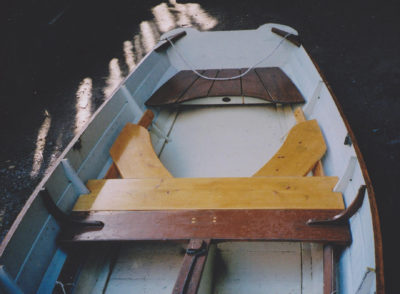
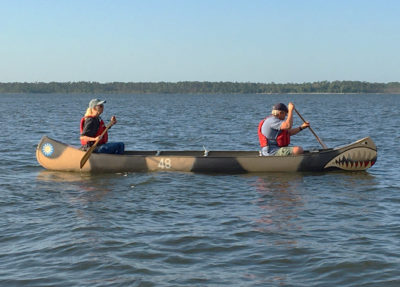
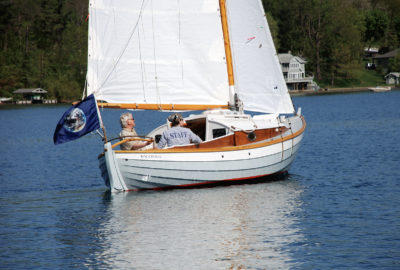
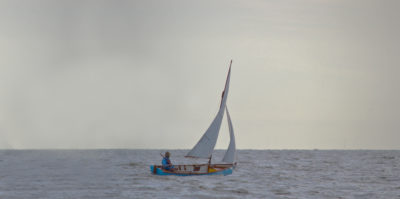
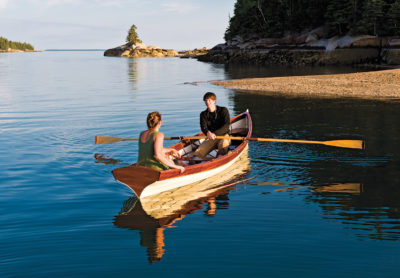
Lovely boat and great video!!